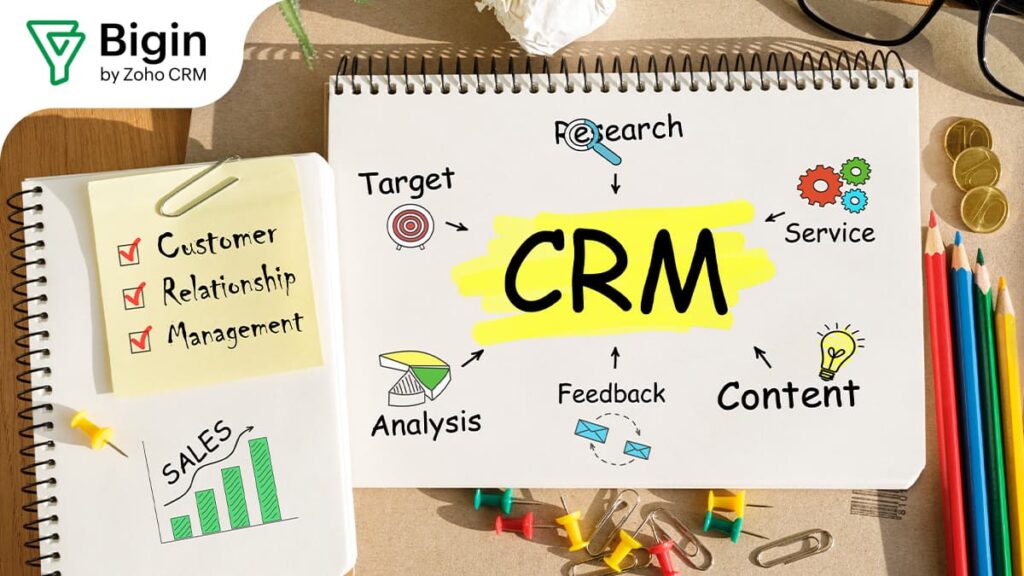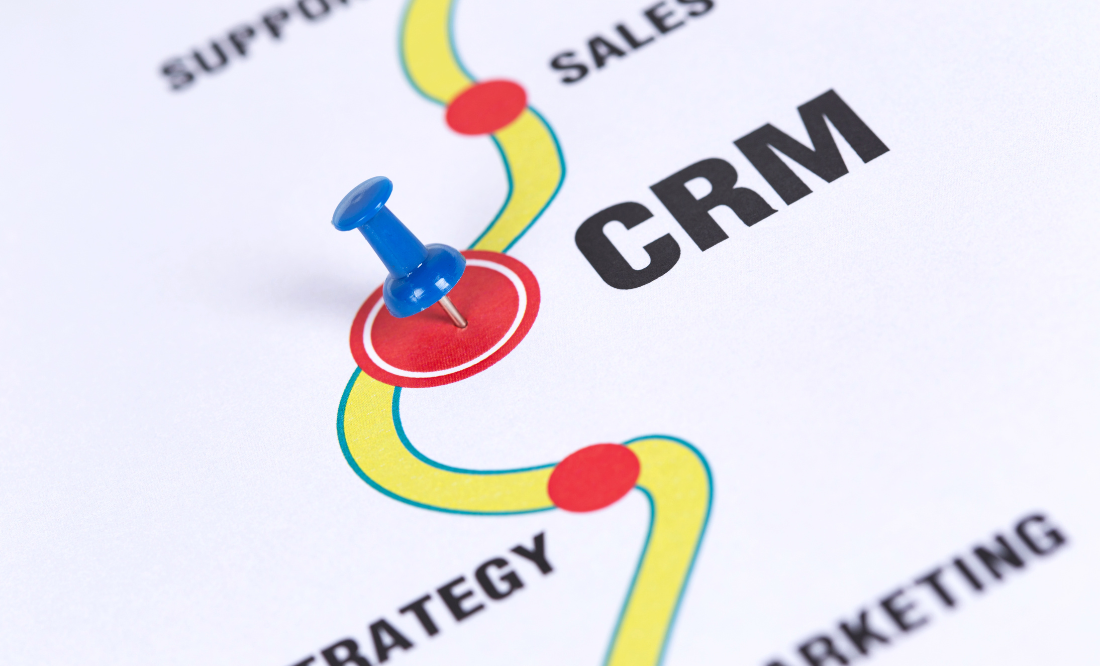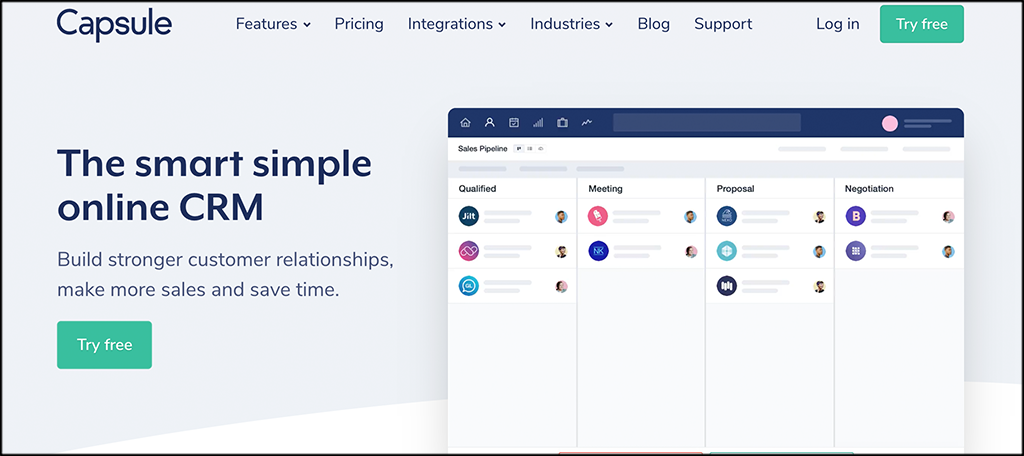
Introduction: Why Your Small Business Needs a CRM
Starting a small business is an exciting adventure. You’re the visionary, the strategist, the doer. You’re likely juggling a million things: product development, marketing, sales, customer service – the list goes on. In the whirlwind of it all, it’s easy for customer relationships to get lost in the shuffle. That’s where a Customer Relationship Management (CRM) system comes in. Think of it as your central hub for everything customer-related. It’s a game-changer, especially for beginners.
This beginner’s guide will walk you through the essentials of a CRM, why it’s crucial for your small business, and how to choose the right one without feeling overwhelmed. We’ll break down complex concepts into easy-to-understand terms, making it simple for you to get started and see real results.
What is a CRM? Demystifying the Buzzword
CRM stands for Customer Relationship Management. At its core, it’s a system that helps you manage your interactions with current and potential customers. It’s more than just a contact list; it’s a comprehensive platform designed to improve customer relationships, streamline your processes, and ultimately, boost your bottom line. Imagine having all your customer data – contact information, purchase history, communication logs, and more – readily available in one place. That’s the power of a CRM.
Think of it like this: you’re building a house (your business). Your customers are the foundation. A CRM is the blueprint and the construction crew, helping you build strong relationships that last. Without a solid CRM, you’re essentially trying to build that house blindfolded, hoping for the best.
Key Features of a CRM
While CRM systems vary, they generally include the following core features:
- Contact Management: Store and organize customer contact information, including names, phone numbers, email addresses, and social media profiles.
- Interaction Tracking: Log all interactions with customers, such as emails, calls, meetings, and support tickets.
- Sales Automation: Automate repetitive sales tasks, such as lead nurturing, follow-up emails, and appointment scheduling.
- Lead Management: Track and manage leads throughout the sales pipeline, from initial contact to conversion.
- Reporting and Analytics: Generate reports and analyze data to gain insights into customer behavior, sales performance, and marketing effectiveness.
- Integration: Integrate with other business tools, such as email marketing platforms, accounting software, and social media channels.
Why Small Businesses Need a CRM
You might be thinking, “My business is small; do I really need a CRM?” The answer is a resounding YES! Here’s why:
- Improved Customer Relationships: A CRM helps you understand your customers better. By centralizing customer data, you can personalize your interactions, anticipate their needs, and provide exceptional customer service. Happy customers are loyal customers.
- Increased Sales: With a CRM, you can streamline your sales process, track leads effectively, and identify opportunities for upselling and cross-selling. This leads to more closed deals and increased revenue.
- Enhanced Efficiency: Automate repetitive tasks, such as data entry and follow-up emails, freeing up your time to focus on more strategic activities. This boost in productivity can be a huge win.
- Better Decision-Making: CRM analytics provide valuable insights into your sales performance, customer behavior, and marketing effectiveness. This data empowers you to make informed decisions that drive business growth.
- Improved Team Collaboration: A CRM centralizes all customer-related information, making it easy for your team members to collaborate and share information. This ensures everyone is on the same page and working towards the same goals.
- Scalability: As your business grows, a CRM can scale with you. It can handle increasing volumes of data and users, ensuring your customer relationships remain strong, no matter how big you get.
In essence, a CRM is an investment in your business’s future. It helps you build stronger customer relationships, drive sales, and streamline your operations, ultimately leading to sustainable growth.
Choosing the Right CRM for Your Small Business: A Beginner’s Checklist
Choosing the right CRM can feel daunting, especially if you’re new to the concept. Don’t worry; we’ll break it down step-by-step. Here’s a checklist to guide you through the selection process:
1. Define Your Needs and Goals
Before you start comparing CRM systems, take some time to define your specific needs and goals. What do you want to achieve with a CRM? Consider these questions:
- What are your biggest challenges in managing customer relationships? Are you struggling with lead tracking, customer communication, or sales follow-up?
- What are your key business goals? Are you looking to increase sales, improve customer satisfaction, or streamline your sales process?
- What features are essential for your business? Do you need contact management, sales automation, lead tracking, or reporting and analytics?
- What is your budget? CRM systems range in price from free to thousands of dollars per month. Determine how much you’re willing to spend.
- What integrations do you need? Do you need to integrate with your email marketing platform, accounting software, or other business tools?
Answering these questions will help you narrow down your options and choose a CRM that aligns with your specific requirements.
2. Consider Your Budget
CRM systems come in various pricing models, including:
- Free CRM: These are typically limited in features and are best suited for very small businesses or those just starting out.
- Subscription-based CRM: This is the most common model, where you pay a monthly or annual fee based on the number of users or features.
- Enterprise CRM: These are typically more expensive and offer a broader range of features and customization options.
Set a realistic budget based on your business needs and the features you require. Don’t overspend on features you don’t need, but also be prepared to invest in a CRM that can grow with your business.
3. Evaluate Features and Functionality
Once you have a clear understanding of your needs and budget, start evaluating different CRM systems based on their features and functionality. Look for systems that offer the following:
- Contact Management: The ability to store and organize customer contact information.
- Lead Management: Tools to track and manage leads throughout the sales pipeline.
- Sales Automation: Features to automate repetitive sales tasks.
- Reporting and Analytics: Tools to generate reports and analyze data.
- Integration: The ability to integrate with other business tools.
- User-Friendliness: A CRM should be easy to use and navigate, even for beginners.
- Mobile Accessibility: The ability to access your CRM data from your mobile devices is a huge plus.
4. Research and Compare CRM Systems
With your needs and budget in mind, start researching different CRM systems. Read reviews, compare features, and explore pricing options. Some popular CRM systems for small businesses include:
- HubSpot CRM: A popular free CRM with a wide range of features.
- Zoho CRM: A feature-rich CRM with affordable pricing plans.
- Salesforce Sales Cloud: A comprehensive CRM with advanced features and customization options.
- Pipedrive: A sales-focused CRM designed for small businesses.
- Freshsales: A CRM with a focus on sales automation and ease of use.
Take advantage of free trials or demos to test out different systems and see which one best fits your needs.
5. Consider Ease of Use and Implementation
A CRM is only effective if your team actually uses it. Choose a system that is user-friendly and easy to learn. Consider these factors:
- User Interface: Is the interface intuitive and easy to navigate?
- Training and Support: Does the vendor offer training and support to help you get started?
- Implementation Process: How easy is it to set up and implement the CRM?
- Data Migration: How easy is it to import your existing customer data into the new CRM?
The easier the system is to use, the more likely your team is to adopt it and realize its benefits.
6. Prioritize Integration Capabilities
Consider how well the CRM integrates with your existing tools. Does it integrate with your email marketing platform, accounting software, and other business tools? Integration capabilities can streamline your workflows and eliminate the need for manual data entry.
7. Review Customer Support and Training
Choose a CRM provider that offers excellent customer support and training resources. This will help you resolve any issues and get the most out of your CRM. Look for:
- Knowledge Base: A comprehensive online resource with articles, tutorials, and FAQs.
- Customer Support: Responsive and helpful customer support via phone, email, or chat.
- Training Resources: Training videos, webinars, and other resources to help you learn the system.
8. Start Small and Iterate
Don’t try to implement every feature of your new CRM at once. Start with the basics and gradually add more features as you become more comfortable. This will help you avoid feeling overwhelmed and ensure a smooth transition. Gather feedback from your team and make adjustments as needed. The best CRM is one that evolves with your business.
Getting Started: Implementing Your CRM for Beginners
So, you’ve chosen your CRM – congratulations! Now comes the implementation phase. Here’s a beginner’s guide to getting started:
1. Data Migration: Importing Your Existing Data
The first step is to import your existing customer data into the CRM. This typically involves exporting your data from spreadsheets or other systems and importing it into your CRM. Most CRM systems provide tools to help with this process. Before importing your data, clean it up to ensure accuracy and consistency. Remove duplicates, standardize formatting, and fill in any missing information. Accurate data is crucial for getting the most out of your CRM.
2. Customization: Tailoring the CRM to Your Needs
Once your data is imported, customize the CRM to fit your specific business needs. This might involve:
- Adding custom fields: Create custom fields to store specific information relevant to your business.
- Customizing the sales pipeline: Define your sales stages and customize the pipeline to match your sales process.
- Setting up automation rules: Automate repetitive tasks, such as sending follow-up emails or assigning leads.
3. Training Your Team
Provide your team with adequate training on how to use the CRM. This includes:
- Basic navigation: Show them how to navigate the system and find the information they need.
- Data entry: Teach them how to enter and update customer data.
- Using CRM features: Train them on how to use the CRM’s features, such as lead tracking, sales automation, and reporting.
Offer ongoing support and encourage your team to ask questions. A well-trained team is essential for CRM success.
4. Setting Up Integrations
Integrate your CRM with other business tools, such as your email marketing platform, accounting software, and social media channels. This will streamline your workflows and eliminate the need for manual data entry.
5. Developing a CRM Usage Policy
Establish clear guidelines for how your team should use the CRM. This includes:
- Data entry standards: Specify how data should be entered and maintained.
- Communication protocols: Define how team members should communicate with customers through the CRM.
- Data security: Implement measures to protect customer data.
A CRM usage policy ensures that your team uses the CRM consistently and effectively.
6. Measuring Results and Refining Your Approach
Regularly monitor your CRM’s performance and make adjustments as needed. Track key metrics, such as sales conversion rates, customer satisfaction, and lead generation. Use this data to identify areas for improvement and refine your CRM strategy. Continuously evaluate your CRM usage and make changes to maximize its effectiveness.
Common Mistakes to Avoid When Implementing a CRM
Even with the best intentions, businesses can make mistakes when implementing a CRM. Here are some common pitfalls to avoid:
- Choosing the wrong CRM: Selecting a CRM that doesn’t meet your business needs.
- Failing to define your goals: Not having a clear understanding of what you want to achieve with a CRM.
- Poor data quality: Importing inaccurate or incomplete data.
- Lack of user adoption: Not getting your team to use the CRM effectively.
- Not providing adequate training: Failing to train your team on how to use the CRM.
- Ignoring customer feedback: Not listening to customer feedback and making necessary adjustments.
- Trying to do too much too soon: Overwhelming your team by implementing too many features at once.
- Not integrating with other tools: Missing out on the benefits of integrating your CRM with other business tools.
- Not measuring results: Failing to track key metrics and make data-driven decisions.
By avoiding these common mistakes, you can increase your chances of CRM success.
Maximizing Your CRM’s Potential: Tips for Small Businesses
Once your CRM is up and running, here are some tips to maximize its potential:
- Regularly update your customer data: Keep your customer data accurate and up-to-date to ensure you’re providing the best possible service.
- Personalize your interactions: Use your CRM data to personalize your interactions with customers, such as sending targeted emails or making personalized phone calls.
- Track your sales pipeline: Monitor your sales pipeline to identify opportunities for improvement and track your progress.
- Use automation to streamline your processes: Automate repetitive tasks to save time and improve efficiency.
- Generate reports and analyze data: Use your CRM’s reporting and analytics features to gain insights into your sales performance, customer behavior, and marketing effectiveness.
- Encourage team collaboration: Use your CRM to facilitate team collaboration and share information.
- Continuously evaluate your CRM usage: Regularly review your CRM usage and make adjustments as needed to maximize its effectiveness.
- Seek feedback from your team and customers: Gather feedback from your team and customers to identify areas for improvement.
- Stay up-to-date on CRM best practices: Keep up-to-date on the latest CRM best practices and trends.
By following these tips, you can unlock the full potential of your CRM and drive business growth.
Conclusion: Embracing the Power of CRM
Implementing a CRM can be a transformative step for your small business. It’s an investment in your customer relationships, your sales process, and your overall success. By following the steps outlined in this guide, you can choose the right CRM, implement it effectively, and start seeing real results. Don’t be afraid to start small, learn as you go, and continuously refine your approach. The journey may have its challenges, but the rewards – stronger customer relationships, increased sales, and a more efficient business – are well worth the effort.
Embrace the power of CRM and watch your small business thrive!

